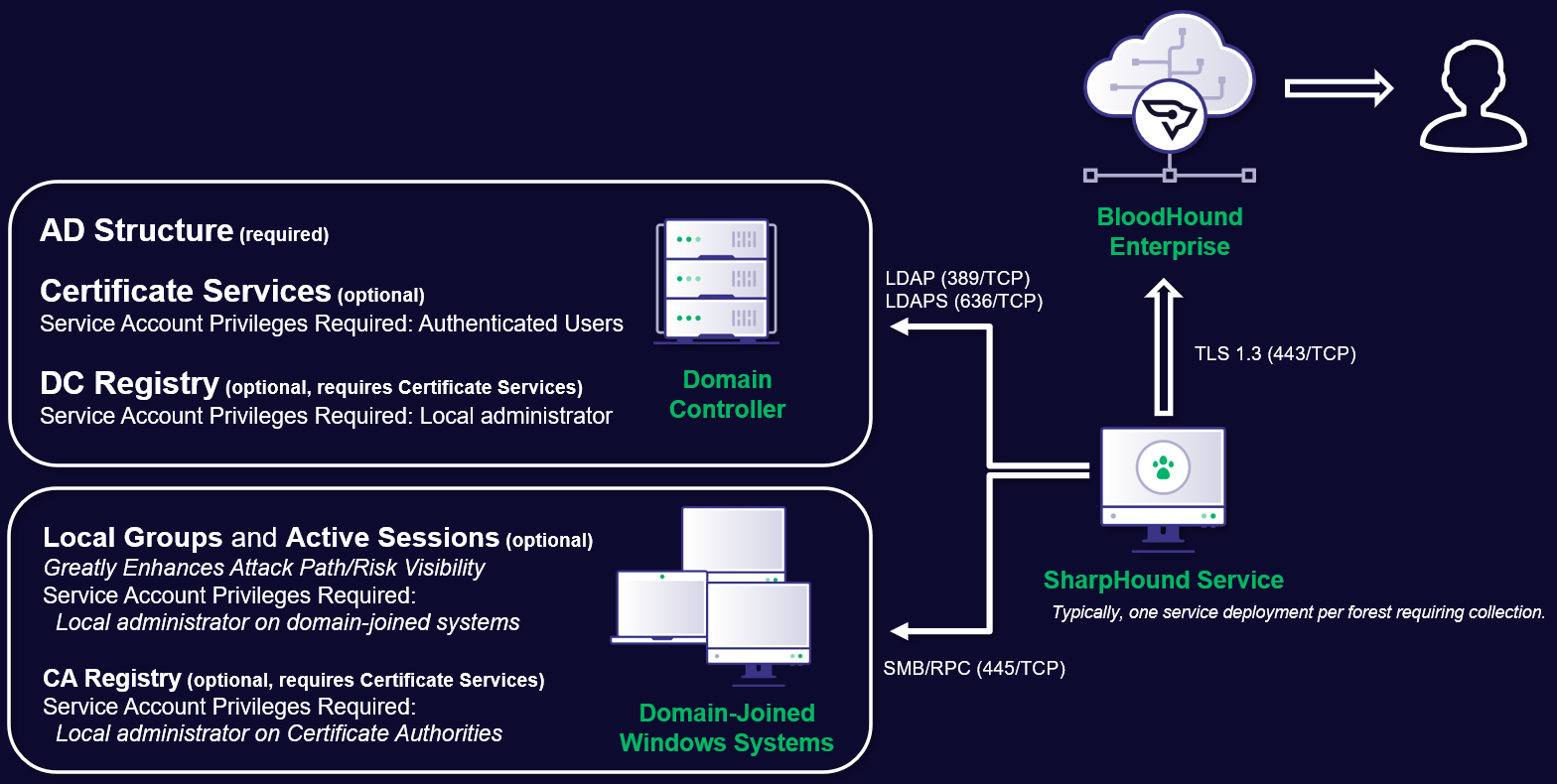 Get started with your BloodHound Enterprise instance and start identifying and remediating security risks.
Get started with your BloodHound Enterprise instance and start identifying and remediating security risks.
Prerequisites
To complete this quickstart, you must have a BloodHound Enterprise instance. To connect with the SpecterOps team and receive an instance, request a demo of BloodHound Enterprise.
Get data into BloodHound
BloodHound Enterprise analyzes data collected by its two collector services, each collecting from a specific directory:
- Active Directory, collected by SharpHound Enterprise
- Entra ID (formerly Azure AD) and Azure IaaS, collected by AzureHound Enterprise
You can run the two services from the same Windows system. AzureHound Enterprise also supports Docker and Kubernetes.
Extend BloodHound’s analysis beyond Active Directory and Entra ID with additional data collectors. The OpenGraph Library showcases collectors built by the community and SpecterOps employees for platforms like AWS, GitHub, Snowflake, and more. Ingest with SharpHound Enterprise (Active Directory)
SharpHound Enterprise collects multiple data types from Active Directory and its domain-joined systems. We recommend collecting all types for full risk identification and accurate risk assessment calculation.
Install the SharpHound Enterprise collector service on a domain-joined Windows system and run it as an Active Directory account.
- Review the SharpHound Enterprise System Requirements and SharpHound Service Hardening Guidelines.
- Install and Upgrade SharpHound Enterprise.
- To fully secure a domain, collect data from all other domains with a trust relationship to it (in- and outgoing trust). Configure SharpHound Enterprise for Cross-Trust Collection.
Ingest with AzureHound Enterprise (Entra ID and Azure)
Install and run the AzureHound Enterprise collector service on Windows, Docker, or Kubernetes.
- Review the AzureHound Enterprise System Requirements and Deployment Process.
- Configure Azure.
- Create your AzureHound configuration.
- Deploy and maintain AzureHound.
Verify data quality
After collecting data, to verify data quality:
-
Go to settings (⚙️) → Administration and select Data Quality.
-
Verify that the collectors have collected the expected amount of data and the number of principal types in each directory.
-
If using privileged collection, verify that the charts Local Group Completeness Over Time and Session Completeness Over Time report higher than 0%.
Obtaining 100% completeness is not possible in most environments due to things like workstations being offline during collection.
-
If you see lower-than-expected data quality examine the data collection logs and contact your SpecterOps representative if you need assistance.
Scope Tier Zero objects
BloodHound Enterprise identifies and prioritizes attack paths. To get the most accurate assessment scope your Tier Zero objects.
- Scope Tier Zero for your environment.
- Mark your environment’s Tier Zero objects in BloodHound.
Grant users access
Your BloodHound Enterprise instance has a few administrative users by default. To bring your team into your instance, grant your team access with dedicated users and roles.
To grant users access to your instance, create users and set access control roles.
BloodHound Enterprise supports two authentication methods for users:
Your default users are configured with built-in authentication. For your team, you can also configure SAML authentication.
Enable multi-factor authentication for all users, no matter the authentication method and user role. If using SAML authentication, your connected identity provider will handle multi-factor authentication.
Explore and remediate attack paths
Go to the Attack Paths, Explore, and Posture pages to see identified attack paths, prioritization, and recommended mitigations.
Next steps
